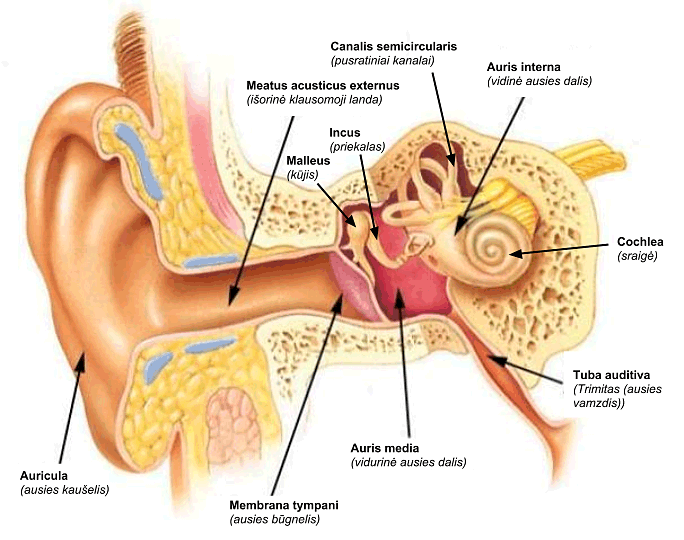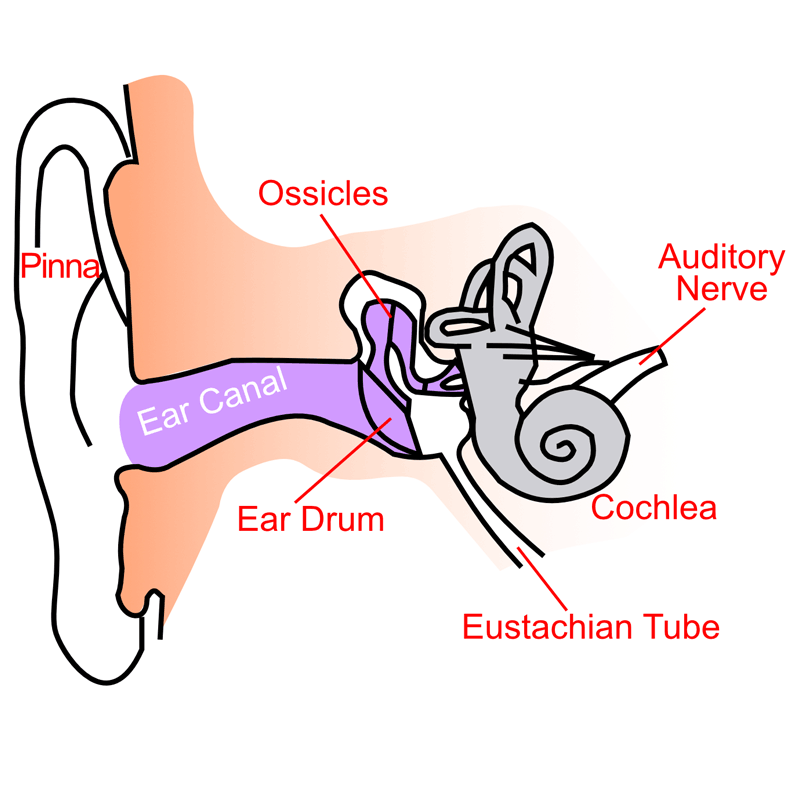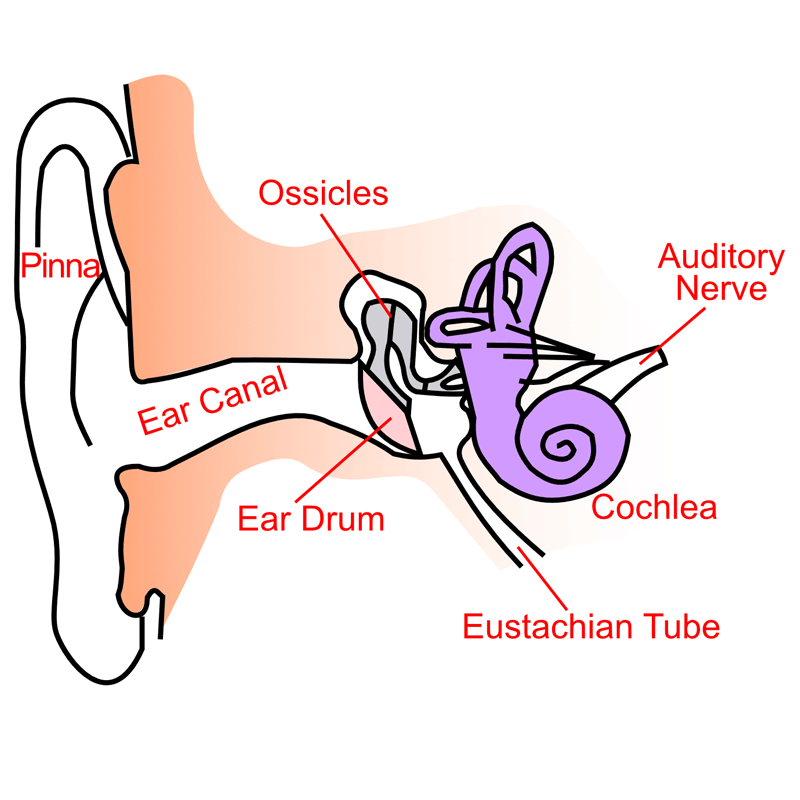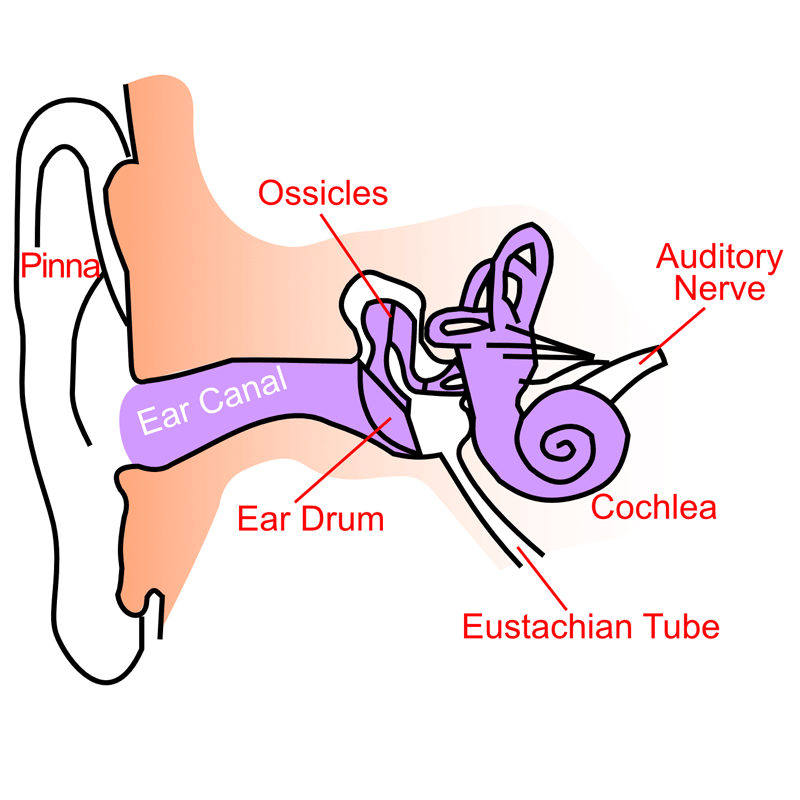Normal Function of the Ear
 Your ear is divided into three parts: an external ear, middle ear and an inner ear. The external ear and the middle ear conduct and transform sound; the inner ear receives it.
Your ear is divided into three parts: an external ear, middle ear and an inner ear. The external ear and the middle ear conduct and transform sound; the inner ear receives it.
The external ear consists of the auricle and ear canal. These structures gather sound and direct it toward the ear drum.
The middle ear consists of the ear drum and three small bones: malleus (hammer), incus (anvil), and stapes (stirrup). These structures transmit sound vibrations to the inner ear.
The inner ear is a fluid-filled cavity. Vibrations in this fluid stimulate the acoustic nerve (hearing nerve). The acoustic nerve then carries the sound waves to the brain where they are interpreted as understandable sounds.
Types of Hearing Loss – Hearing Impairments
Conductive Hearing Loss (CHL)

This type of hearing loss is caused by an anatomical problem that hinders sound transmission through the ear drum and hearing bones. Causes may be due to a perforated ear drum, trauma, disarticulation or fixation of the hearing bones, and otosclerosis. Treatment options typically include surgery or hearing aids.
Sensorineural Hear Loss (SNHL)

This type of hearing loss originates from degeneration of the cochlear hair cells. Noise trauma, hereditary factors, certain medications, and aging can cause SNHL. Treatment consists of amplification with hearing aids, then bone anchored hearing aid if the hearing loss is unilateral and severe, and cochlear implantation in those who do not have benefit from hearing aids.
Mixed Hearing Loss (MHL)

There is a possibility of a combination of both a conductive and a sensorineural hearing loss. This is referred to as a mixed hearing loss. This type of hearing loss originates not only from degeneration of cochlear hair cells, but also a conductive component such as a perforated ear drum, disarticulation or fixation of the hearing bones, and otosclerosis. Treatment usually involves surgery and or hearing aids.
